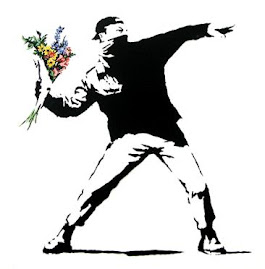An
article written a couple of years ago speaks well to our situation today. In “Bearing Witness to the Pain of Violence,”
Yonat Shimron speaks about the murder rate in Durham, North Carolina, which is
more than twice the state average. (The large majority being young African-American men killed by firearms.)
Members of the faith community tried various approaches in
response. They worked on policies to
resist gun violence. They enlisted the help
of police and other officials.
Unfortunately, the state legislature outlawed efforts by cities who
wanted to regulate guns. As important as
public policy is, it became clear that something else needed to be done.
In 1997,
a vigil was held after yet another citizen was slain. The Religious Coalition for a Nonviolent Durham began employing vigils as a way of standing with those touched by
violence. Around the country, groups use
vigils in their own communities. One
example is the Benedictines for Peace in Erie, Pennsylvania. Whenever someone in the city of Erie is
killed by an act of violence, they organize a vigil at the site of the death.
Too often, we like to turn this type of work over
to the professionals—social workers, psychiatrists, police officers, and others—and
then wash our hands of the matter. The
folks in Durham think that’s a mistake.
It’s noted, “Those
professionals are trained to ‘work for’ the individual or family. They can’t offer the kind of relationship that
comes when people of faith provide what psychologist Carl Rogers called
‘unconditional positive regard.’ These
kinds of relationships perpetuate inequality and keep people strangers to one
another. The coalition’s experience is
that when people are treated as equals, they form deep and abiding bonds of
trust.”
Of
course, this applies to all kinds of situations, not just cases of murder. In the Bible, the friends of Job provide a
classic example of what to do—and what not
to do! After Job loses his
children, his possessions, and his health, his best friends get together and
see if they can help.
Chapter 2, verses 11 to 13 tell the story. “Now when Job’s three friends heard of all
these troubles that had come upon him, each of them set out from his
home—Eliphaz the Temanite, Bildad the Shuhite, and Zophar the Naamathite. They met together to go and console and
comfort him. When they saw him from a
distance, they did not recognize him, and they raised their voices and wept
aloud; they tore their robes and threw dust in the air upon their heads. They sat with him on the ground seven days
and seven nights, and no one spoke a word to him, for they saw that his
suffering was very great.”
Job’s suffering has been so intense that at first
they don’t even recognize him. Some of
us can relate to that, perhaps during a visit to the hospital. The person we’re there to see might have been
so ravaged by illness that we think we’re in the wrong room. “Who is this?” we wonder.
Job’s friends understand that the best thing they
can do is to do nothing at all. Just
being there is what’s required. They
keep vigil with him. Sadly, we know what
happens after that. When Job speaks and
shouts out his anguish, his buddies decide to engage him in theological
debate. At that point, things go south
in a hurry!
The point is that when we’re faced with questions
which are sometimes literally matters of life and death, can we see the
difference between “being with” and “doing for”? Both are important, but there’s no doubt that
“being with” is usually so much more uncomfortable. We want to do the good deed, and then get the
heck out of there.
In our own case, with St. Lydia’s Place, we want to
make real-world contributions. As vital
as it is to teach and reflect, if it stops right there, it’s hard to see how
that helps anyone else. Taking Lydia as
a model for ministry surely involves the hospitality we see in Acts 16. Her conversion demonstrates both a mystical
listening to God and a prophetic standing with the apostles in the midst of
opposition.
We know that humility is required. We confess our ignorance and shortcomings. We want and need help from others. Those who read this might be moved to reach
out. Can we hear from you? Maybe we can help each other. What are ways in which we can “keep vigil” in
our communities?









